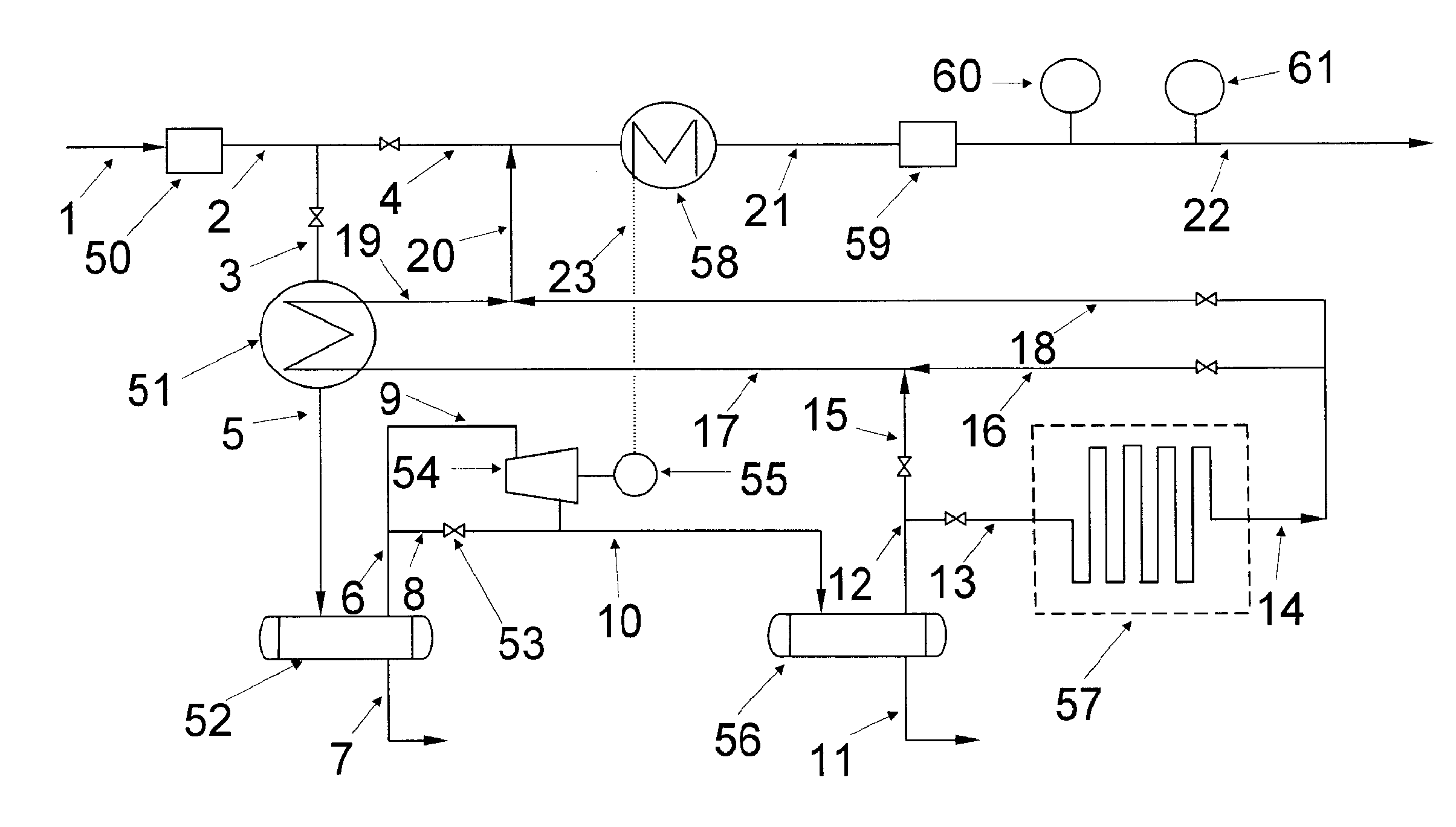Method to produce natural gas liquids (ngl's) at gas pressure reduction stations
a technology of gas pressure reduction and natural gas liquid, which is applied in the direction of gaseous fuels, fuels, and petroleum industry, can solve the problems of not being able to recover the ngls present in the natural gas stream at metering and pressure reduction, and achieve the effects of preventing the formation of hydrates, reducing temperature, and recovering most of energy
- Summary
- Abstract
- Description
- Claims
- Application Information
AI Technical Summary
Benefits of technology
Problems solved by technology
Method used
Image
Examples
Embodiment Construction
[0010]The typical method that presently is used to pre-heat natural gas at Pressure Reduction Stations will now be described with reference to FIG. 1.
[0011]In this typical gas pre-heating process, gas enters a station via gas supply line 1. The gas stream enters filter 20 to remove any debris in the stream. The filtered gas exits the filter through line 2 and enters heat exchanger 21 for pre-heating. The heated gas exits through line 3 and the pressure is reduced at Pressure Reducing Valve (PRV) 22. A by-pass with PRV 23 is provided for service reliability, for scheduled and unscheduled maintenance. The PRV pressure is controlled by Pressure Transmitter (PT) 27 at a pre-set pressure. The low pressure controlled gas stream 4 feeds a gas slipstream 5 for combustion in a heater / boiler 24. The gas slipstream flow 5 is controlled by Temperature Controller (TC) 26 at a pre-set temperature. The gas stream 6 is metered at Flow Meter (FM) 25 and delivered to consumers.
[0012]The preferred emb...
PUM
 Login to View More
Login to View More Abstract
Description
Claims
Application Information
 Login to View More
Login to View More - R&D
- Intellectual Property
- Life Sciences
- Materials
- Tech Scout
- Unparalleled Data Quality
- Higher Quality Content
- 60% Fewer Hallucinations
Browse by: Latest US Patents, China's latest patents, Technical Efficacy Thesaurus, Application Domain, Technology Topic, Popular Technical Reports.
© 2025 PatSnap. All rights reserved.Legal|Privacy policy|Modern Slavery Act Transparency Statement|Sitemap|About US| Contact US: help@patsnap.com



